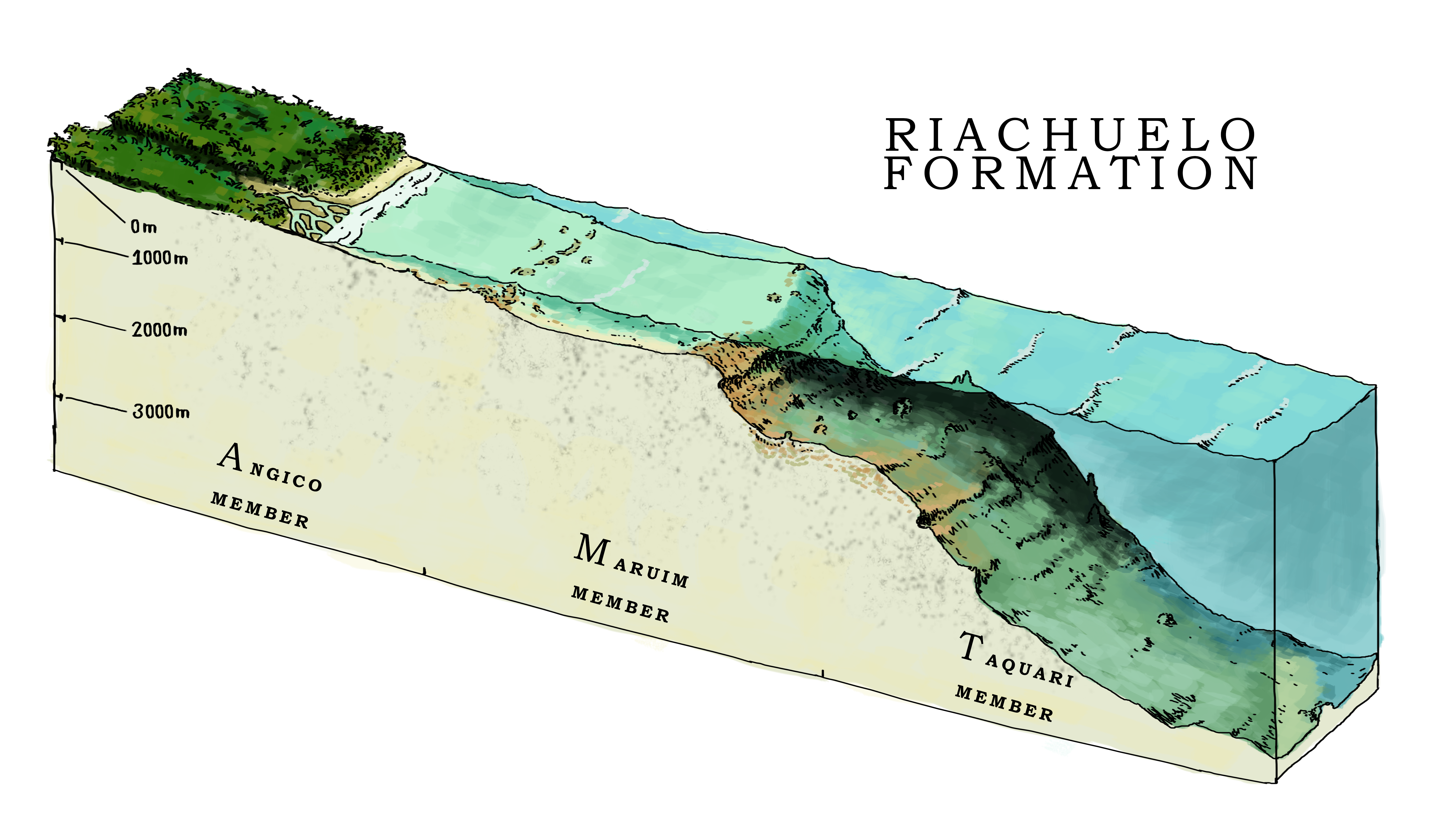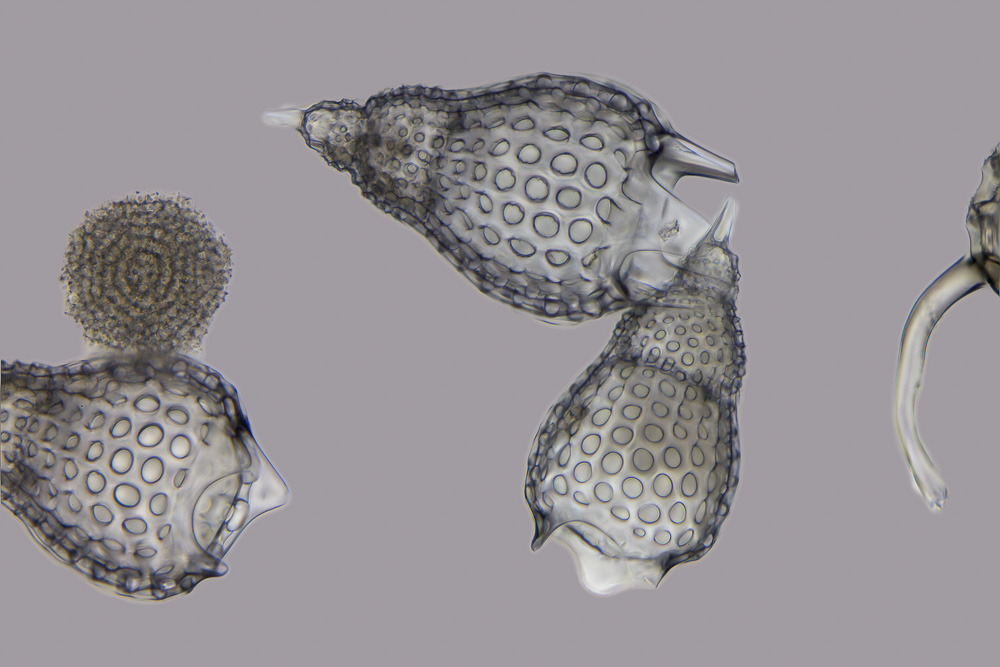|
Riachuelo Formation
The Riachuelo Formation is a geologic Formation (stratigraphy), formation of the Early Cretaceous, Early to Late Cretaceous (Aptian, Late Aptian to Cenomanian) age in northeastern Brazil's Sergipe-Alagoas Basin. It is the first Formation of the Basin to contain sediments deposited under fully marine conditions. The formation is subdivided into three members: Angico, Taquari and Maruim. The formation has provided fossils of Ammonoidea, ammonites, Gastropoda, gastropods, Bivalvia, bivalves, brachiopods, Serpulidae, serpulids, Echinoderm, equinoderms, Ostracod, ostracoids, radiolarians, lobsters and Crabs. Several fish species reported from the Santana formation, Santana Formation also occur in this formation, namely: Cladocyclus, ''Cladocyclus gardneri'', Neoproscinetes, ''Neoproscinetes penalvai'', Notelops, ''Notelops brama'', Rhacolepis, ''Rhacolepis buccalis'', Tharrhias, ''Tharrhias araripis'' and Vinctifer, ''Vinctifer comptoni''. Santanichthys, ''Santanichthys diasii'' is als ... [...More Info...] [...Related Items...] OR: [Wikipedia] [Google] [Baidu] |
Aptian
The Aptian is an age in the geologic timescale or a stage in the stratigraphic column. It is a subdivision of the Early or Lower Cretaceous Epoch or Series and encompasses the time from 121.4 ± 1.0 Ma to 113.0 ± 1.0 Ma (million years ago), approximately. The Aptian succeeds the Barremian and precedes the Albian, all part of the Lower/Early Cretaceous. The Aptian partly overlaps the upper part of the Western European Urgonian Stage. The Selli Event, also known as OAE1a, was one of two oceanic anoxic events in the Cretaceous Period, which occurred around 120 Ma and lasted approximately 1 to 1.3 million years. The Aptian extinction was a minor extinction event hypothesized to have occurred around 116 to 117 Ma.Archangelsky, Sergio.The Ticó Flora (Patagonia) and the Aptian Extinction Event" ''Acta Paleobotanica'' 41(2), 2001, pp. 115-22. Stratigraphic definitions The Aptian was named after the small city of Apt in the Provence region of France, which is also known for its cry ... [...More Info...] [...Related Items...] OR: [Wikipedia] [Google] [Baidu] |
Gastropoda
The gastropods (), commonly known as snails and slugs, belong to a large taxonomic class of invertebrates within the phylum Mollusca called Gastropoda (). This class comprises snails and slugs from saltwater, from freshwater, and from land. There are many thousands of species of sea snails and slugs, as well as freshwater snails, freshwater limpets, and land snails and slugs. The class Gastropoda contains a vast total of named species, second only to the insects in overall number. The fossil history of this class goes back to the Late Cambrian. , 721 families of gastropods are known, of which 245 are extinct and appear only in the fossil record, while 476 are currently extant with or without a fossil record. Gastropoda (previously known as univalves and sometimes spelled "Gasteropoda") are a major part of the phylum Mollusca, and are the most highly diversified class in the phylum, with 65,000 to 80,000 living snail and slug species. The anatomy, behavior, feeding, a ... [...More Info...] [...Related Items...] OR: [Wikipedia] [Google] [Baidu] |
Rhacolepis
''Rhacolepis'' is an extinct genus of ray-finned fish from the Cretaceous Santana Formation of Brazil. Complete fossilised heart The heart is a muscular organ in most animals. This organ pumps blood through the blood vessels of the circulatory system. The pumped blood carries oxygen and nutrients to the body, while carrying metabolic waste such as carbon dioxide to t ...s from this species have been recovered. References Crossognathiformes Prehistoric ray-finned fish genera Cretaceous bony fish Prehistoric fish of South America Cretaceous Brazil Fossils of Brazil Romualdo Formation Fossil taxa described in 1843 Taxa named by Louis Agassiz {{Crossognathiformes-stub ... [...More Info...] [...Related Items...] OR: [Wikipedia] [Google] [Baidu] |
Notelops
''Notelops'' is an extinct genus of prehistoric ray-finned fish. See also * Prehistoric fish * List of prehistoric bony fish A ''list'' is any set of items in a row. List or lists may also refer to: People * List (surname) Organizations * List College Albert A. List College of Jewish Studies, known simply as List College, is the undergraduate school of the J ... References Elopiformes Prehistoric ray-finned fish genera Cretaceous bony fish Early Cretaceous fish Fossils of Mexico Fossil taxa described in 1901 {{elopiformes-stub ... [...More Info...] [...Related Items...] OR: [Wikipedia] [Google] [Baidu] |
Cladocyclus
''Cladocyclus'' (derived from the Greek κλάδος/kládos ("branch") and κύκλος/kýklos ("circle")) is an extinct genus of Ichthyodectidae. It was a predatory fish of about in length, found in the Albian Romualdo and Crato Formations of the Araripe Basin in northeastern Brazil. A new species, ''Cladocyclus pankowskii'', was discovered in the Cenomanian Akfabou Formation of Morocco in 2007, and in the Upper Plattenkalk of Italy.''Cladocyclus'' at .org The species ''Cladocyclus geddesi'' is known from the Winton Formation
[...More Info...] [...Related Items...] OR: [Wikipedia] [Google] [Baidu] |
Santana Formation
The Santana Group is a geologic group, formerly included as the middle part of the Araripe Group, in the Araripe Basin of northeastern Brazil. The group comprises the Crato, Ipubi and Romualdo Formations and is dated to the Aptian to Albian stages of the Early Cretaceous. The formations of the group were deposited in a lacustrine to subtidal shallow marine environment in the Araripe rift basin.Santana Group at Fossilworks.org The Santana Group has provided a rich assemblage of fossils; flora, fish, arthropods insects, turtles, snakes, dinosaurs, such as '' |
Crab
Crabs are decapod crustaceans of the infraorder Brachyura, which typically have a very short projecting "tail" (abdomen) ( el, βραχύς , translit=brachys = short, / = tail), usually hidden entirely under the thorax. They live in all the world's oceans, in freshwater, and on land, are generally covered with a thick exoskeleton, and have a single pair of pincers. They first appeared during the Jurassic Period. Description Crabs are generally covered with a thick exoskeleton, composed primarily of highly mineralized chitin, and armed with a pair of chelae (claws). Crabs vary in size from the pea crab, a few millimeters wide, to the Japanese spider crab, with a leg span up to . Several other groups of crustaceans with similar appearances – such as king crabs and porcelain crabs – are not true crabs, but have evolved features similar to true crabs through a process known as carcinisation. Environment Crabs are found in all of the world's oceans, as well as in fresh w ... [...More Info...] [...Related Items...] OR: [Wikipedia] [Google] [Baidu] |
Lobster
Lobsters are a family (biology), family (Nephropidae, Synonym (taxonomy), synonym Homaridae) of marine crustaceans. They have long bodies with muscular tails and live in crevices or burrows on the sea floor. Three of their five pairs of legs have claws, including the first pair, which are usually much larger than the others. Highly prized as seafood, lobsters are economically important and are often one of the most profitable commodities in coastal areas they populate. Commercially important species include two species of ''Homarus'' from the northern Atlantic Ocean and scampi (which look more like a shrimp, or a "mini lobster")—the Northern Hemisphere genus ''Nephrops'' and the Southern Hemisphere genus ''Metanephrops''. Distinction Although several other groups of crustaceans have the word "lobster" in their names, the unqualified term "lobster" generally refers to the clawed lobsters of the family Nephropidae. Clawed lobsters are not closely related to spiny lobsters o ... [...More Info...] [...Related Items...] OR: [Wikipedia] [Google] [Baidu] |
Radiolaria
The Radiolaria, also called Radiozoa, are protozoa of diameter 0.1–0.2 mm that produce intricate mineral skeletons, typically with a central capsule dividing the cell (biology), cell into the inner and outer portions of endoplasm and Ectoplasm (cell biology), ectoplasm. The elaborate mineral skeleton is usually made of Silicon dioxide, silica. They are found as zooplankton throughout the global ocean. As zooplankton, radiolarians are primarily heterotrophic, but many have photosynthetic endosymbionts and are, therefore, considered mixotrophs. The skeletal remains of some types of radiolarians make up a large part of the cover of the ocean floor as siliceous ooze. Due to their rapid change as species and intricate skeletons, radiolarians represent an important diagnostic fossil found from the Cambrian onwards. Description Radiolarians have many needle-like pseudopods supported by bundles of microtubules, which aid in the radiolarian's buoyancy. The cell nucleus and most oth ... [...More Info...] [...Related Items...] OR: [Wikipedia] [Google] [Baidu] |
Ostracod
Ostracods, or ostracodes, are a class of the Crustacea (class Ostracoda), sometimes known as seed shrimp. Some 70,000 species (only 13,000 of which are extant) have been identified, grouped into several orders. They are small crustaceans, typically around in size, but varying from in the case of ''Gigantocypris''. Their bodies are flattened from side to side and protected by a bivalve-like, chitinous or calcareous valve or "shell". The hinge of the two valves is in the upper (dorsal) region of the body. Ostracods are grouped together based on gross morphology. While early work indicated the group may not be monophyletic and early molecular phylogeny was ambiguous on this front, recent combined analyses of molecular and morphological data found support for monophyly in analyses with broadest taxon sampling. Ecologically, marine ostracods can be part of the zooplankton or (most commonly) are part of the benthos, living on or inside the upper layer of the sea floor. While Myodoc ... [...More Info...] [...Related Items...] OR: [Wikipedia] [Google] [Baidu] |
Echinoderm
An echinoderm () is any member of the phylum Echinodermata (). The adults are recognisable by their (usually five-point) radial symmetry, and include starfish, brittle stars, sea urchins, sand dollars, and sea cucumbers, as well as the sea lilies or "stone lilies". Adult echinoderms are found on the sea bed at every ocean depth, from the intertidal zone to the abyssal zone. The phylum contains about 7,000 living species, making it the second-largest grouping of deuterostomes, after the chordates. Echinoderms are the largest entirely marine phylum. The first definitive echinoderms appeared near the start of the Cambrian. The echinoderms are important both ecologically and geologically. Ecologically, there are few other groupings so abundant in the biotic desert of the deep sea, as well as shallower oceans. Most echinoderms are able to reproduce asexually and regenerate tissue, organs, and limbs; in some cases, they can undergo complete regeneration from a single limb. ... [...More Info...] [...Related Items...] OR: [Wikipedia] [Google] [Baidu] |




.jpg)


